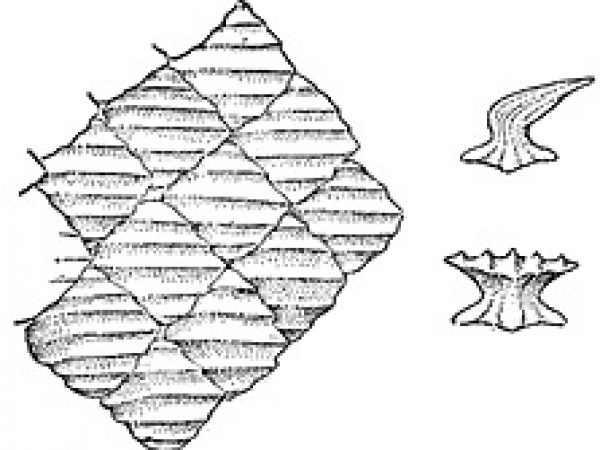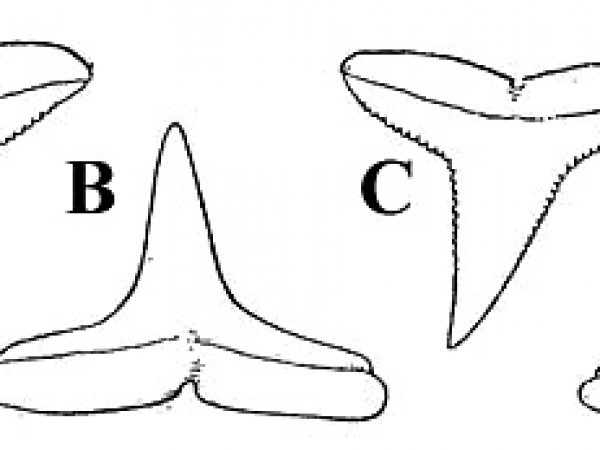
Carcharhinus brevipinna
The spinner shark is a slender, gray-bronze shark named for its distinctive aerial “spinning” behavior at the surface. When feeding, spinner sharks will often swim through schools of bait fish, spinning along their longitudinal axis, snapping at fish as they move through the water toward the surface. When they breach the surface they can be seen spinning in the air – sometimes as much as 20 feet above the water surface. They are frequently mistaken for blacktip sharks (Carcharhinus limbatus) as they have a superficially similar appearance. However, spinner sharks grow to a larger size than blacktips and have a distinctly marked black tip on the anal fin (in adults) where black tip sharks do not. The spinner shark is a common species of nearshore waters in temperate and tropical regions. It also occurs offshore as a pelagic species. Although occasionally involved in shark bites on humans, the teeth are adapted for seizing small prey rather than tearing at large prey and therefore usually result in relatively minor injuries (ISAF 2018).
Fun Video: CBS News, spinner shark jumping out of water in Florida
Order: Carcharhiniformes
Family: Carcharhinidae
Genus: Carcharhinus
Species: brevipinna
Common Names
English language common names for Carcharhinus brevipinna include spinner shark, blacktipped shark, great blacktip shark, large blacktip shark, long-nose grey shark, and shark.
Other names from across the world include:
Africaans: spinnerhaai
Arabic: Jarjur naudth
Dutch: Tolhaai
French: requin nene pointe, requin tisserand
Greek: Karcharynos kontofteros
Italian: Squalo tissitore
Japanese: Hanazame
Kannada: Shivra
Marathi: Mushi, Chotimushi
Portuguese: Cação-agulha-preta, Galha-preta, Sucuri-de-ponta-petra, Tubarão-tecelão, Machote, Marracho barbatana negra, Serra-garoupa
Spanish: Jaqueton, tiburon aleta negra
Tagalog: Pating
Turkish: Köpek baligi
Importance to Humans
Spinner sharks are taken primarily on longlines in the directed commercial shark fishery and as bycatch in the pelagic longline fishery. They are also taken in lesser quantities by recreational anglers trolling and stilt fishing. When it is hooked, this shark is known to make vertical spinning leaps out of the water. The flesh is marketed fresh and dried-salted for human consumption while the skins are valuable for leather and fins used in shark-fin soup (Burgess 2009).
Danger to Humans
Although the spinner shark is not considered dangerous to humans, it may pose a threat if attracted to divers that are spearfishing. According to the International Shark Attack File, the spinner shark has been responsible for 16 unprovoked attacks on humans none of which have been fatal. However, its small, narrow teeth are better suited to feeding on small fishes, not attacking large prey items such as marine mammals (ISAF 2018).
View shark attacks by species on a world mapConservation
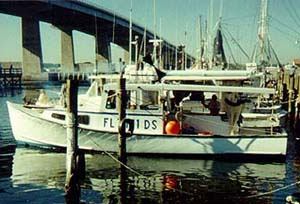
IUCN Red List Status: Near Threatened
The spinner shark is common but vulnerable to fishing pressure. Because it uses inshore waters for its nursery areas, it is particularly susceptible to habitat destruction associated with human commercial development of coastal areas (Compagno et al. 2005).
> Check the status of the spinner shark at the IUCN website.
The spinner shark is currently listed by the World Conservation Union (IUCN) as “Vulnerable”. The IUCN is a global union of states, governmental agencies, and non-governmental organizations in a partnership that assesses the conservation status of species.
Geographical Distribution
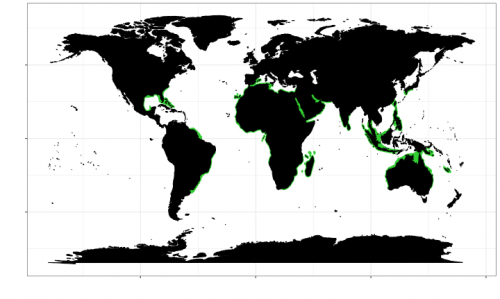
The spinner shark is found in the western Atlantic from Cape Cod, Massachusetts (U.S.A.) to the southern waters of Brazil. In the eastern Atlantic Ocean, it is found from Spain to Namibia, including the southern Mediterranean Sea. In the Indo-West Pacific, the spinner shark is found in the Red Sea, south to South Africa, eastward to Indonesia, northward to Japan, and then south to Australian waters (Burgess 2009).
Habitat
The spinner shark lives in subtropical, tropical, and temperate regions, ranging from inshore to offshore waters over continental and insular shelves. Depth of habitat ranges from 0-328 feet (0-100 m). The spinner shark forms schools and is considered a highly migratory species off the Florida and Louisiana coasts and in the Gulf of Mexico, moving inshore during spring and summer months to reproduce and feed. Although juvenile spinner sharks move into lower portions of bays with the tides, they avoid areas of low salinity. The spinner shark is an active, fast swimming shark that is often seen leaping out of the water, spinning in pursuit of prey.
Distinguishing Characteristics
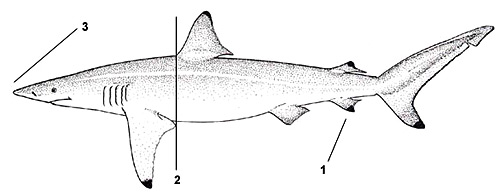
1. Anal, first, and second dorsal, pectoral, and lower caudal fins black-tipped in specimens less than 2.6 feet (0.8 m)
2. First dorsal fin fairly small, originating over or just behind free tips of pectoral fins, apex rounded
3. Snout pointed, as long or longer than width of mouth
Biology
Distinctive Features
This shark has a slender build with a long, pointed snout and small round eyes. The lower jaw has a distinct notch along the trailing edge (not visible without dissection). The first dorsal fin is small and semi-falcate, originating above and markedly behind the pectoral fin. This dorsal fin has a short rear tip followed by a moderately large second dorsal with a short rear tip. An inter-dorsal ridge is absent. The pectoral fins are narrow and falcate with narrow pointed or rounded tips. The caudal fin is slender with a narrowly rounded tip.
The spinner shark is often confused with the blacktip shark (C. limbatus) The two are easily distinguished as adults. The anal fin of the adult spinner is black-tipped while the anal fin of the adult blacktip lacks this marking. However, neonate spinners have no such markings on their anal fins, or for that matter, on any of their fins, making them challenging to distinguish from black tip neonates on the basis of fin markings alone. However, the relative placement of fins on the torso differ between the two species. The first dorsal fin of the blacktip shark originates at the midpoint of the pectoral fin inner margin; while the first dorsal of the spinner shark originates well behind the rear tips of the pectoral fins. The shape of the first dorsal fin also differs between the two species. In the spinner shark, the posterior edge of the fin is approximately perpendicular to the horizontal axis of the body and the tip is more rounded. The blacktip shark’s first dorsal fin has a slightly falcate trailing edge.
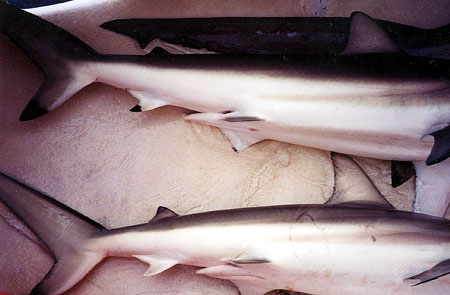
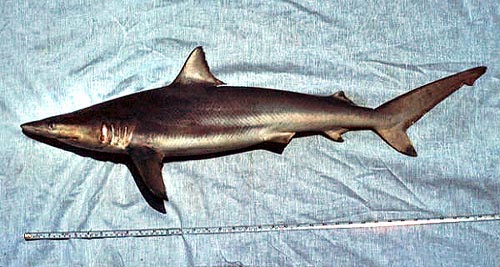
Coloration
The spinner shark is gray to bronze on the dorsal surface, fading to white on the underside. The second dorsal, anal, and pectoral fins as well as the lower lobe of the caudal fin have clearly defined black tips in adults. The pelvic, first dorsal, and dorsal caudal lobe may also have black tips, but not always.
Dentition
The teeth in the upper jaw of the spinner have narrow and erect cusps on broad bases. This differs from the blacktip shark, which has larger and somewhat broader upper teeth. The first few teeth are symmetrical and erect with teeth toward the margin of the jaw becoming slightly oblique. The outer three teeth are very low with finely serrated edges with smooth-edged tips.
The lower jaw teeth have more slender cusps on broad bases than the teeth of the upper jaw. The tips of the teeth are not recurved forward as in the blacktip shark. The teeth are slightly oblique along the entire length of the jaw. There are sometimes one or two small teeth located at the symphysis (middle) of the upper jaw and usually one at the symphysis in the lower jaw. The rows of teeth in each jaw vary in number, but specimens typically have 16 teeth in the upper jaw and 15 in the lower jaw.
Denticles
The dermal denticles of the spinner shark are very closely arranged, even overlapping, concealing the skin. The blades are slightly raised and are broader than long. The ridges number usually 7 (rarely 5), with 7 very short or entirely even teeth.
Size, Age, and Growth
Spinner sharks reach an average size of about 6.4 feet (195 cm), with the maximum total length being 9.1 feet (278). Female spinner sharks mature at about 5 feet (150- 155 cm) TL and males mature at about 4 feet (130 cm) TL. In the northwest Atlantic, neonates are born at 60-75 cm TL and in South Africa, neonates are born at 60-80 cm TL. The spinner shark grows relatively fast compared to other species and upon reaching maturity, grows approximately 2 inches/yr (5 cm/yr). The maximum age recorded is 11 years, although age at the largest known sizes suggest 15-20 years (Burgess 2009).
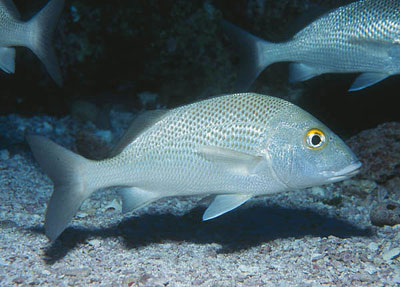
Food Habits
The spinner shark feeds primarily on small pelagic teleosts including ten-pounders, sardines, herrings, anchovies, sea catfish, lizardfish, mullet, bluefish, tunas, bonito, croakers, jacks, mojarras, grunts, tongue-soles, stingrays, cuttlefish, squid, and octopi. It has an unusual method of feeding, swimming rapidly through schools, while spinning around the axis of its body. The shark snaps at the quickly scattering fish, often leaping out of the water. This feeding behavior has also been reported for the blacktip shark (C. limbatus), although to a lesser degree. During feeding and scavenging events, spinner sharks sometimes form aggregations. Spinner sharks have also been reported to scavenge discarded fish from fishing vessels (Burgess 2009).
Reproduction
Spinner sharks are “viviparous”, or livebearing, with their embryos nourished by a yolksac-placenta. The gestation period lasts 11-15 months with birth occurring at inshore locations during the summer months for stocks located off North America. Stocks located in the Mediterranean move inshore to give birth during summer off the North African coast. Litter size is from 3-20 pups (usually 7-11) (Burgess 2009). The reproductive cycle is biennial (every two years) (Castro 1993). The pups immediately move into shallow estuarine waters to seek protection from predators and find available food.
Predators
Larger sharks are potential predators of the spinner shark, especially on juvenile and subadult individuals.
Parasites
Kroyeria deetsi n.sp. is a parasitic copepod that has been reported to infect the gills of spinner sharks captured in the Indian Ocean. Other parasitic copepods reported associated with spinner sharks includeAlebion carchariae (body surface), Nesippus orientalis (gill arches and in the mouth), Perissopus dentatus (external nares and trailing edges of fins), Nemesis pilosus (gills) and Nemesis atlantica (gills).
Taxonomy
Müller & Henle first described the spinner shark as Carcharias brevipinna in 1839. Shortly thereafter, this shark went through a series of name changes including Squalus brevipinna, Aprionodon brevipinna, and finally the currently valid name Carcharhinus brevipinna. The genus name Carcharhinus is derived from the Greek “karcharos” = sharpen and “rhinos” = nose. Synonyms referring to this shark in past scientific literature include Isogomphodon maculipinnis Poey 1865, Carcharhinus maculipinnis Poey 1865, Uranga nasuta Whitley 1943, Longmania calamaria Whitely 1944, Carcharinus johnsoni Smith 1951, Aprionodon caparti Poll 1951, and Carcharhinus johnsoni Smith 1951. It is also often confused with blacktip shark, Carcharhinus limbatus, due to similar characteristics.
References
Burgess, G.H. 2009. Carcharhinus brevipinna. The IUCN Red List of Threatened Species 2009: e.T39368A10182758. http://dx.doi.org/10.2305/IUCN.UK.2009-2.RLTS.T39368A10182758.en.
Castro, José I. “The shark nursery of Bulls Bay, South Carolina, with a review of the shark nurseries of the southeastern coast of the United States.” Environmental biology of fishes 38.1-3 (1993): 37-48.
Compagno, L., Dando, M., & Fowler, S. (2005) A Field Guide to the Sharks of the World. London: Harper Collins Publishers Ltd.
Revised by Lindsay French and Gavin Naylor 2018
Original preparation by Cathleen Bester
